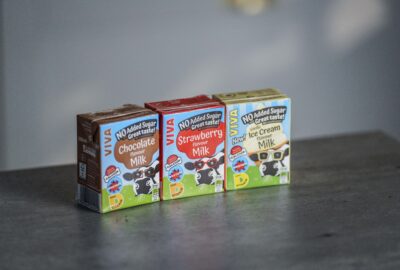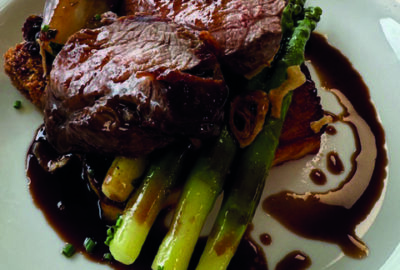A nutritious breakfast (or brunch for those with a later start), is the cornerstone of a productive day. For children, breakfast fuels growing bodies and sustains energy levels, and for adults it supports mental acuity and overall well-being. However, nutritious doesn’t mean boring – in fact, today it’s quite the opposite. Having previously flown under the radar as a simple-to-provide meal with many operators offering standard fare of porridge, a pastry, toast and a variation of eggs, sausages and bacon, breakfast is now under the spotlight.
A FOCUS ON HEALTH IN 2024
What started as a burgeoning topic, consciously seeking food that can improve our health and wellbeing has become mainstream. Moving into 2024, the health sector will diversify. We are all well-versed in the need for dishes that support gut health and concentration but going forward, consumers will also seek food that improves their mood or boosts energy. The focus will become more holistic and operators will need to highlight dishes that optimise the health of their consumers’ minds, moods and bodies.
But what does that mean for a breakfast menu?
Combining ingredients such as a probiotic yoghurt that is purported to improve our mood and support gut health with nuts, seeds, oats and fruit for grab-and-go overnight oats, or adding fatty fish such as salmon or tuna to your menu (which are good for both heart and mind), is a simple way to start.
Ingredient swaps are another easy way to improve the nutritional content of a dish. For example, swapping smashed avocado (which although good for your heart, is not a sustainable ingredient) with smashed peas delivers a similar texture and great flavour profile. Not only are peas a good source of vitamin C to strengthen our immune systems, they also contain nutrients that help to reduce inflammation and improve cardiovascular health. Nutritionally, there is little difference between fresh and frozen peas, so not only do they pack a powerful punch, but they are also more sustainable than avocados, can reduce food waste and are cheaper too!
Mushrooms regularly feature on breakfast menus but are another ingredient that is often overlooked. One of the few plant-based sources of vitamin D, they help support gut health and contain a form of soluble fibre that activates parts of our immune system that help us fight infection. They are easy to source and grow, meaning their low carbon footprint scores high on the sustainability scale, so perhaps it’s time to make more room for the ‘shroom in 2024. Think mushroom tortilla, mushroom hash with poached eggs, wild mushroom and goat cheese omelet or scrambled tofu with potatoes, mushrooms and peppers.
Those looking for more unusual or trending ingredients this year should investigate cacao nibs as they have been cited as one to watch. These crushed pieces of cocoa bean used to make chocolate are packed full of nutrients and minerals that support a healthy body and mind. Just 28g of cacao nibs added to granola, smoothies or overnight oats provides us with nearly a third of our recommended daily intake. They are high in fibre, protein and healthy fats, low in sugar and contain anti-inflammatory nutrients – ideal for care home residents who suffer from arthritis.
THE ’NOT-QUITE-SO-INDULGENT BREAKFAST’
Although there will always be a market for indulgent breakfast or brunch dishes, it is possible to dial it back a bit, using grains, seeds and rustic flour in sweet breakfast bakes to appeal to customers looking for a ‘better for you’ breakfast. As we head further into 2024, we anticipate seeing this type of dish become more popular to transform calorific indulgence into a more acceptable treat. Ingredients such as buckwheat are likely to become more popular, replacing flour in dishes such as pancakes or muffins. Not only does it support soil health, buckwheat contains protein, carbs and fibre and is naturally gluten free.
UPDATE A CLASSIC
A staple breakfast item, porridge is not only good for us, it keeps us feeling fuller for longer, reducing the craving for snacks. In schools it benefits pupils by slowly releasing energy, helping them to concentrate, in care homes it is a nostalgic favourite and for the OOH sector, it is the ideal winter warmer while on-the-go. Unfortunately, porridge doesn’t have a reputation for being the most exciting of breakfast fare! With a little creativity, updating this classic dish to provide a daily special will help your diners see it in a new light. Here are a few suggestions to get you started:
Baked oats – use your porridge oats to make small pots of warm, fruit filled bakes by mixing them with baking powder, banana, maple syrup, eggs, cinnamon and blueberries.
Transform your toppings – try a homemade compôte made with berries and served with fresh figs, vanilla poached pears, or a crunchy granola topping.
Dairy free – swap milk for creamed coconut and coconut yoghurt or use almond milk for a mild, nutty flavour, stirring in some frozen raspberries for tartness.
Combine oats & seeds – add chia seeds to your oat mix, topping it with prunes poached with cinnamon or combine multiple grains such as quinoa, spelt and barley flakes to alter the texture and flavour.
Overnight oats – enjoyed cold rather than hot, but the basic ingredients are the same and it is a TikTok trend, so will be popular with the younger generation.
Rather than a radical refresh of your offering, providing a healthy breakfast that entices diners to take a moment and eat, as opposed to skipping a meal, often only requires minor adjustments. Before long, you will be infusing your menus with nourishing choices that keep customers satisfied, energised and coming back for more.
OOH Dining Trends
According to Lumina Intelligence, the average spend on breakfast food and drink increased 16% in the 12 weeks to February 2023 compared to the same period in 2022, with bakery items proving the most popular. As more employees return to working in office environments, the opportunity for maximising sales of breakfast items will continue to increase.
Care sector catering
Serving fresh fruit in small bowls cut into bitesized pieces on the side may encourage residents to take the bowl away with them and consume throughout the morning if they are unable to finish it at the table. Paying attention to food and drink that hydrates, supports joint health and digestive health is key for overall wellbeing.
Education Catering
In nurseries, starchy, carbohydrate-driven dishes, such as porridge deliver energy and fibre. In primary schools, street food is popular so dishes such as breakfast burritos, muffins, baked oats and fruit-filled French toast wraps would work well. As children get older, choice becomes key and ‘build your own’ hot or cold options are increasingly adopted.


